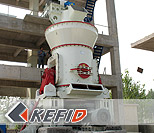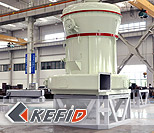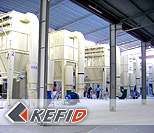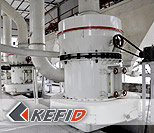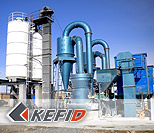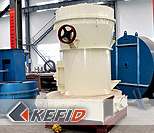Home - News Center - Product Knowledge

The Vertical Mill
The vertical mill is a kind of mill equipment, widely used in cement chemicals, coal, electricity and other fields. With the advantages of small footprint, low power consumption, small noise, simple process, layout compact, combined with crushing, drying, grinding, classifying as a whole, the vertical mill has become the preferred equipment for milling cement raw meal in the modern cement production factories.
The world's first vertical mill was developed by Loesche Company from Germany, who had the mature design already in the year of 1925. At present, the largest vertical mill - LM63.4, has a capacity of 840 TPH, with the millstone diameter of 6.3mm, the power of 5600 KW and is equiped with 4 rollers.
The current abroad manufacturers of vertical mills mainly include Loesehe Company, Fuller Company, UBE Company (LM series of vertical mill), FLS Company (Atox Mill), KHD Company (RM mill) and Pfeiffer Company (MPS series of vertical mill). The domestic manufacturers of vertical mills have a relatively small amount, whose R&D and production are still in the developing level. However, compared with international brands, the domestic brands have some unique characteristics, which are better suited to the domestic market.
Compared with other grinding equipment, the vertical mill has the following features.
1, With high efficiency of grinding. Using the principle of material bed’s crushing and squeezing, the material is rolled, cutted, impacted in the mills; the airflow in the mill can take the grinded materials out timely to avoid excessively grinded; the materials generally stay in the mill for 2-4 minutes. The vertical mill has the 165% grinding efficiency as the ball mill and the power consumption can be reduced by 30% or so.
2, With high drying efficiency. Hot air spray in from the annular gap with high wind speed; there is a large ventilation cross-section in the mill and the air resistance is very small. The materials with 8% moisture can be dried by the exhaust gas from preheater in the end of kiln. If there is a hot air furnace, the materials with 15%-20% water content will be dried.
3, The feeding size can be very large, usually can be up to the length as 5% of the roller diameter. The large vertical mill’s feeding size can be up to 150 ~ 200 mm. The equipment has superior technical performance and is of high capacity. It has high rate of operation and lower metal-worn than the ball mill.
4, Strong adaptability to grinded materials. The vertical mill can be used to grind a variety of materials, such as limestones, sandstones (Si02> 90%), coals, cement clinkers, blast furnace slags and so on. No matter the differences of raw material’s easy-grinding or abrasive, the vertical mill can produce qualified products with different fineness and different specific surfaces just by adjusting the internal structure and operating properly.
5, with simple process and compact layout, lower routine maintenace cost. It can be used as open-air setting and can save 70% construction investment than the ball mill.
6, Good overall airtight performance, small dust, low noise and superior environment.
7, Convenient and fast control for finished products, flexible product adjustment and easy to achieve operational intelligence and automation.
8, The disadvantages of the vertial mill include that it is not suitable for grinding hard and abrasive materials. And its easy-wore parts are more expensive than ball mills’. However, compared with the total amount of maintenance for the ball mill, elevator, and separator which the vertial mill replaces, the vertial mill still has simpler maintenance, easier operation and smaller amount of work..
March 29, 2013
MTW European millMarch 22, 2013
Vertical mill,mill for desulfurization in power plMarch 06, 2013
Two methods about how coarse powder mill workJanuary 29, 2013
What is the principle of KEFID T series grinding mAugust 17, 2011

